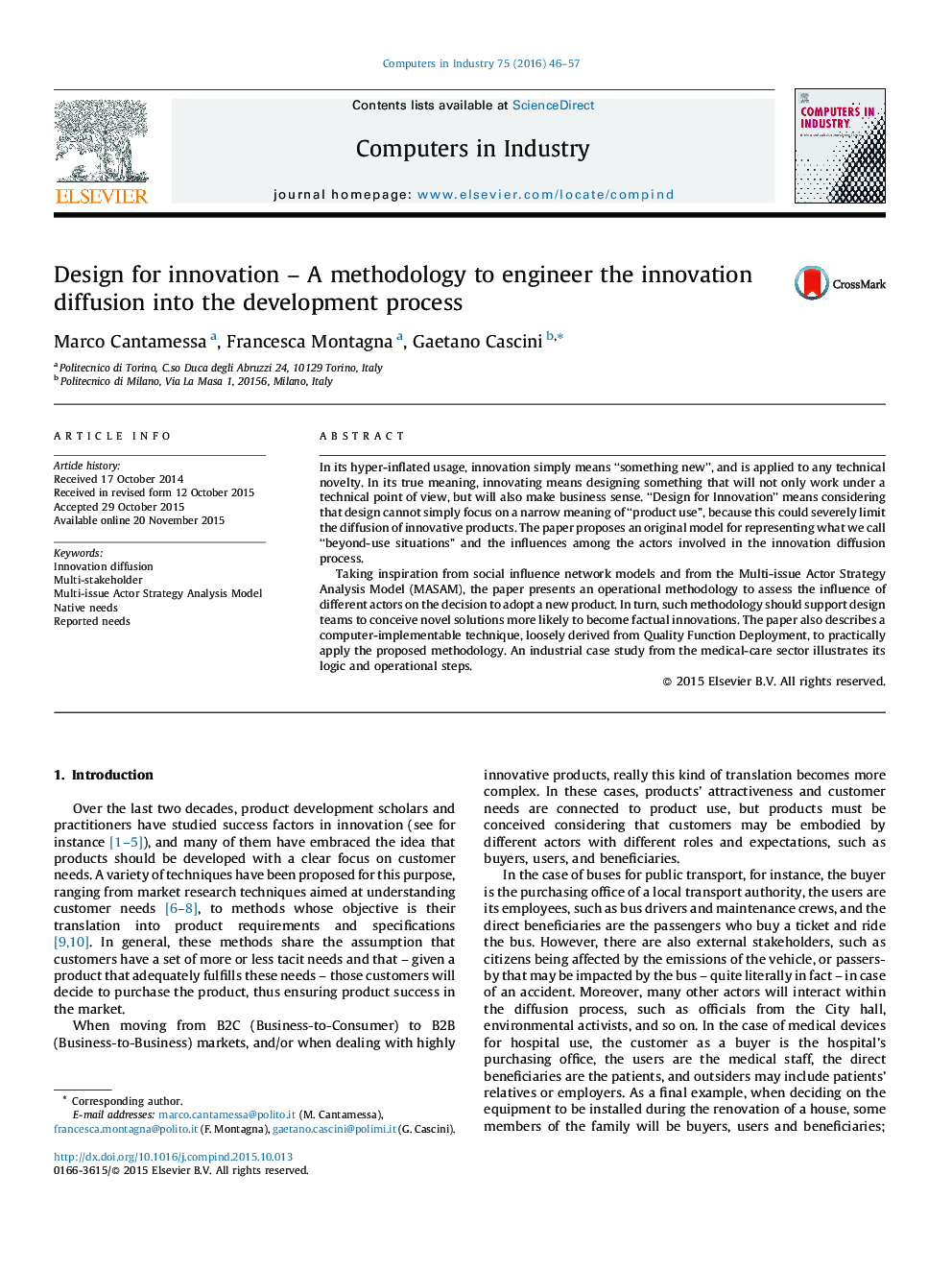| Article ID | Journal | Published Year | Pages | File Type |
|---|---|---|---|---|
| 508863 | Computers in Industry | 2016 | 12 Pages |
•A multi-actorial perspective of needs allows interpreting innovation diffusion processes.•A QFD-derived methodology for considering innovation diffusion within product development.•A multi-stakeholder model representing stakeholders’ needs and their reciprocal influences.
In its hyper-inflated usage, innovation simply means “something new”, and is applied to any technical novelty. In its true meaning, innovating means designing something that will not only work under a technical point of view, but will also make business sense. “Design for Innovation” means considering that design cannot simply focus on a narrow meaning of “product use”, because this could severely limit the diffusion of innovative products. The paper proposes an original model for representing what we call “beyond-use situations” and the influences among the actors involved in the innovation diffusion process.Taking inspiration from social influence network models and from the Multi-issue Actor Strategy Analysis Model (MASAM), the paper presents an operational methodology to assess the influence of different actors on the decision to adopt a new product. In turn, such methodology should support design teams to conceive novel solutions more likely to become factual innovations. The paper also describes a computer-implementable technique, loosely derived from Quality Function Deployment, to practically apply the proposed methodology. An industrial case study from the medical-care sector illustrates its logic and operational steps.
